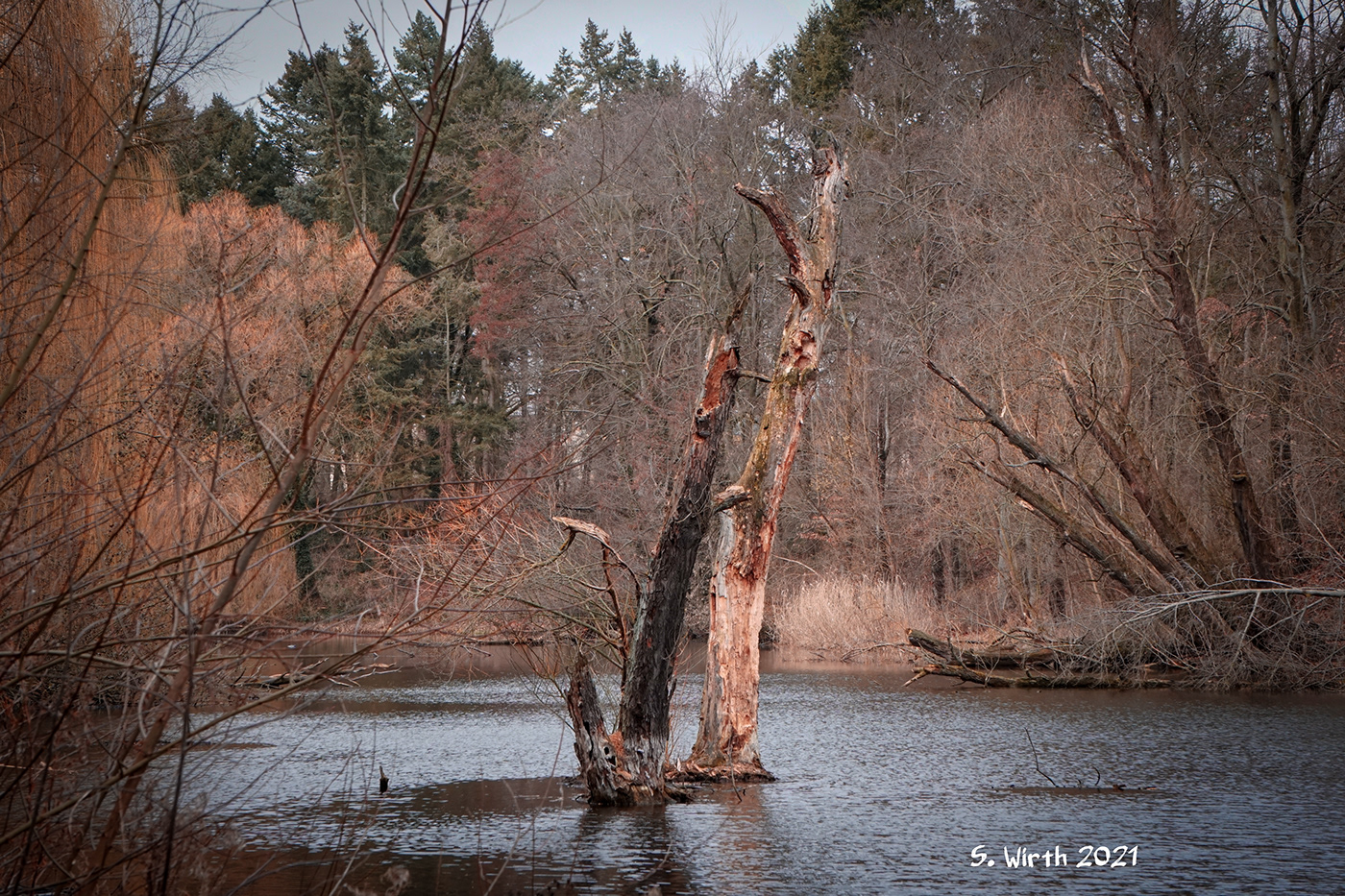
Ponds and blooming woods
April to the end of May. Trees stand close to the banks of the ponds. Their silhouettes are reflected on the gently tinkling water surface.
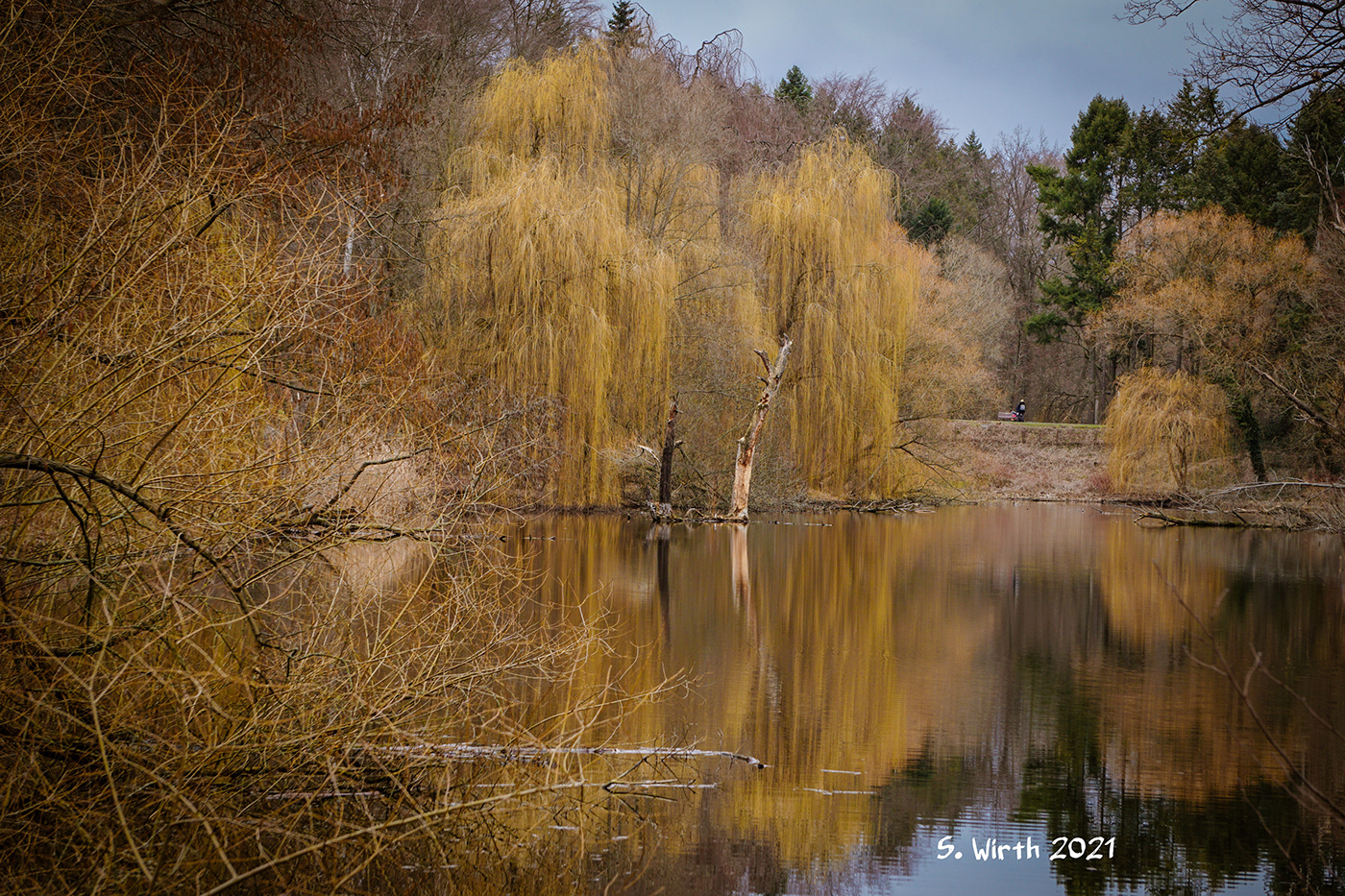
Pond in urban park Rehberge, Berlin
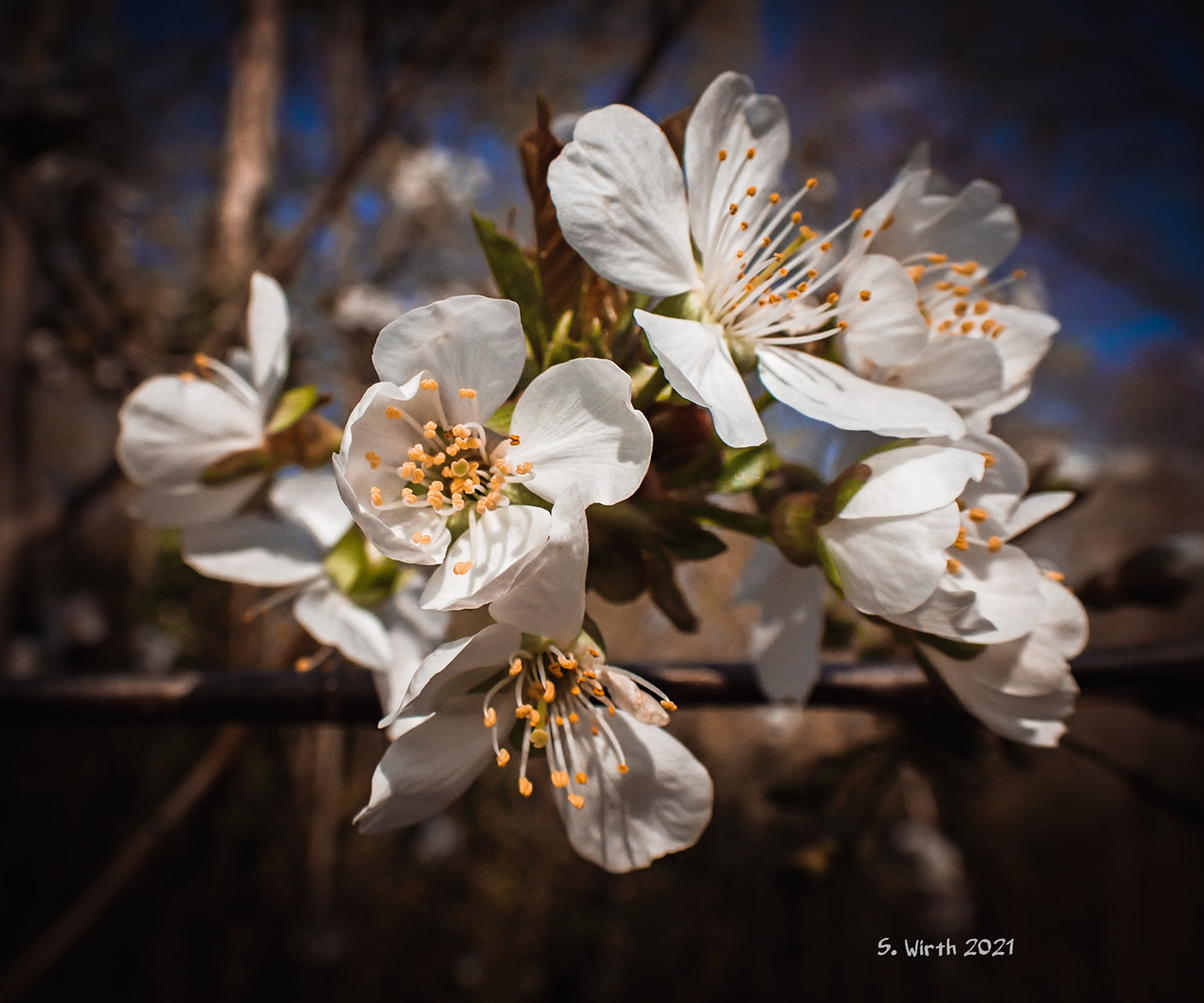
Cherries bloom on the edge of the forest, while sprawling roots surround the paths with their bony claws. The alternation of shadows even breathes movement into them.
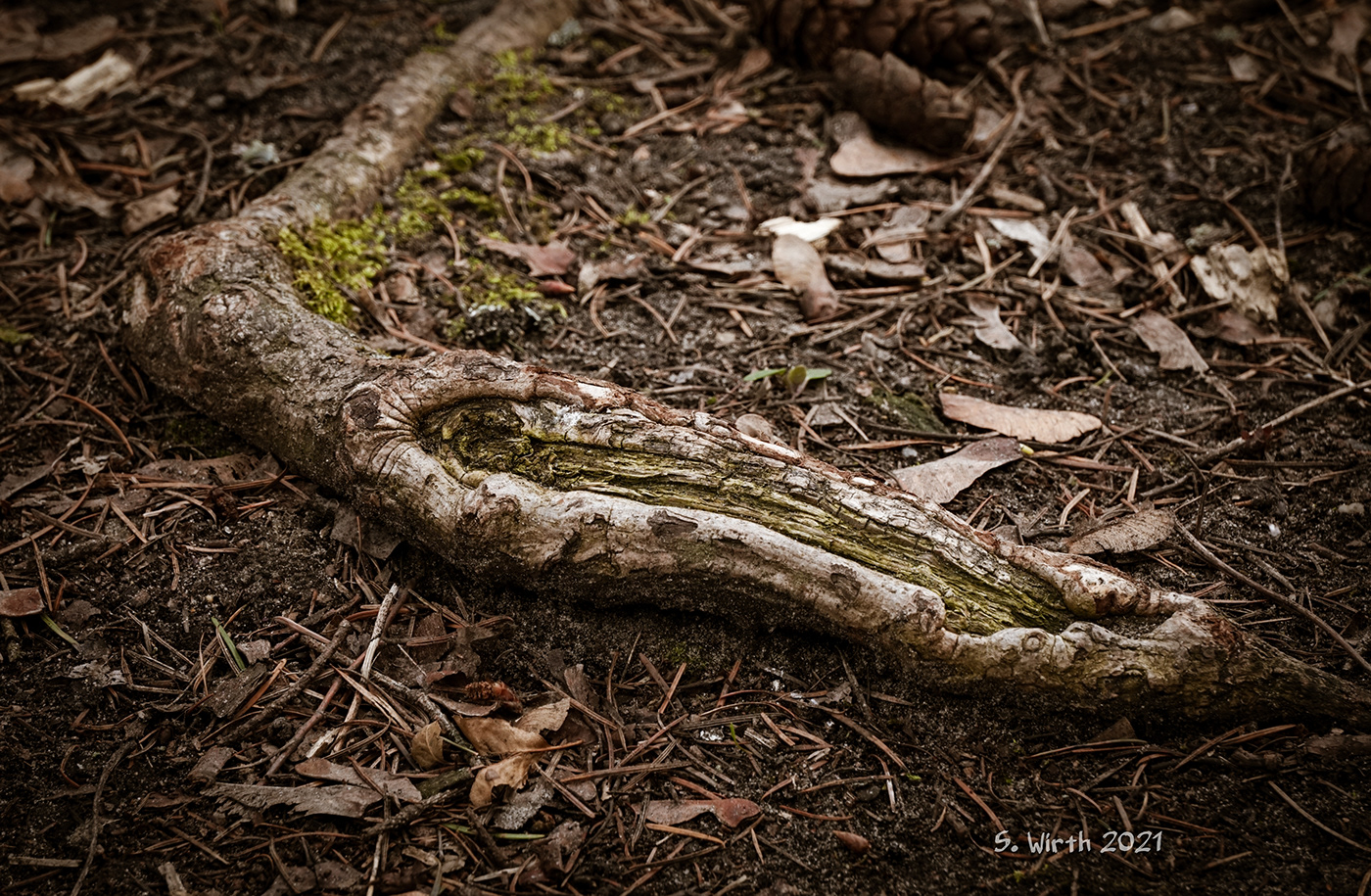
Tree root over-growing a forest ground in park Rehberge, Berlin
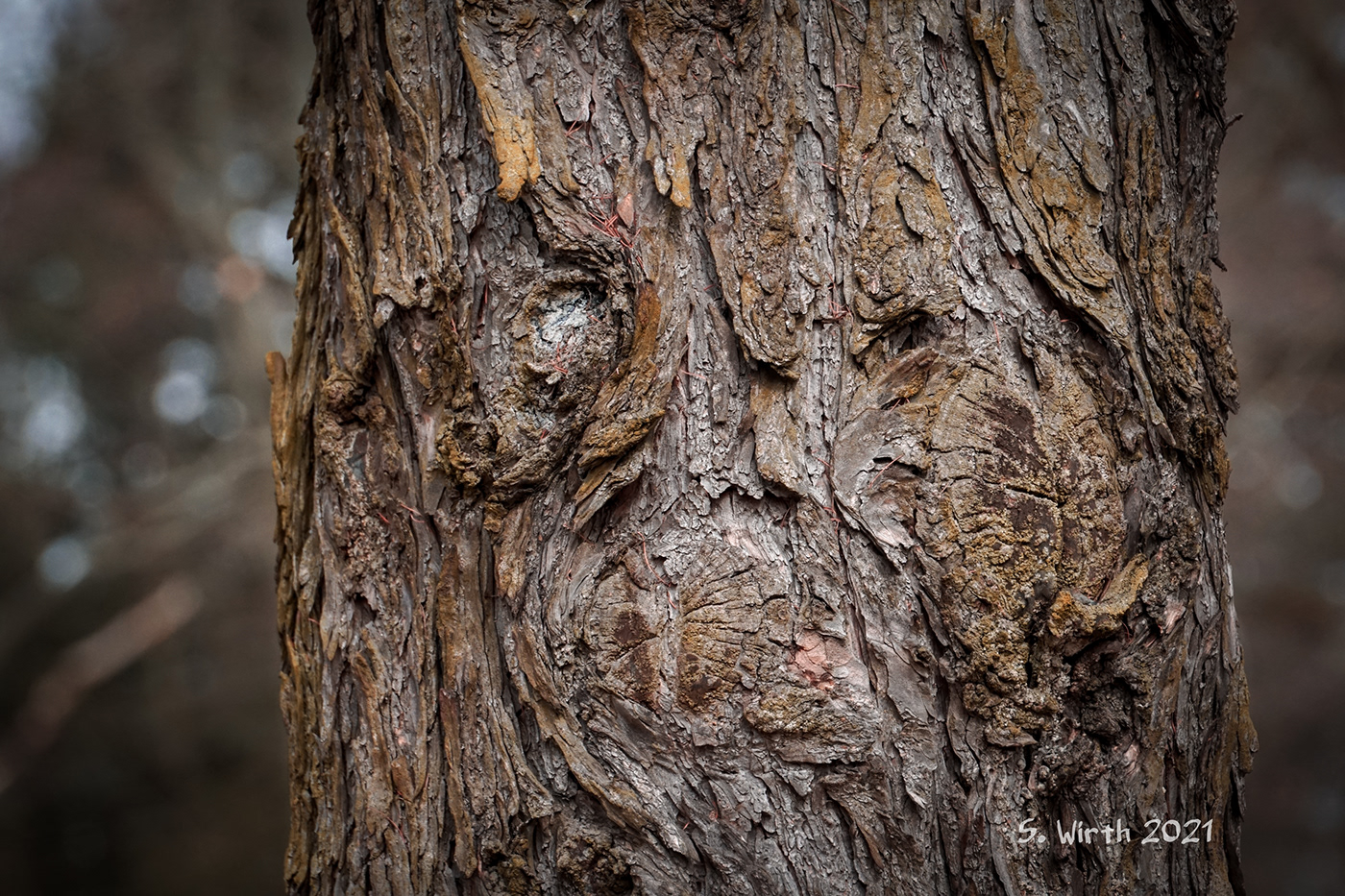
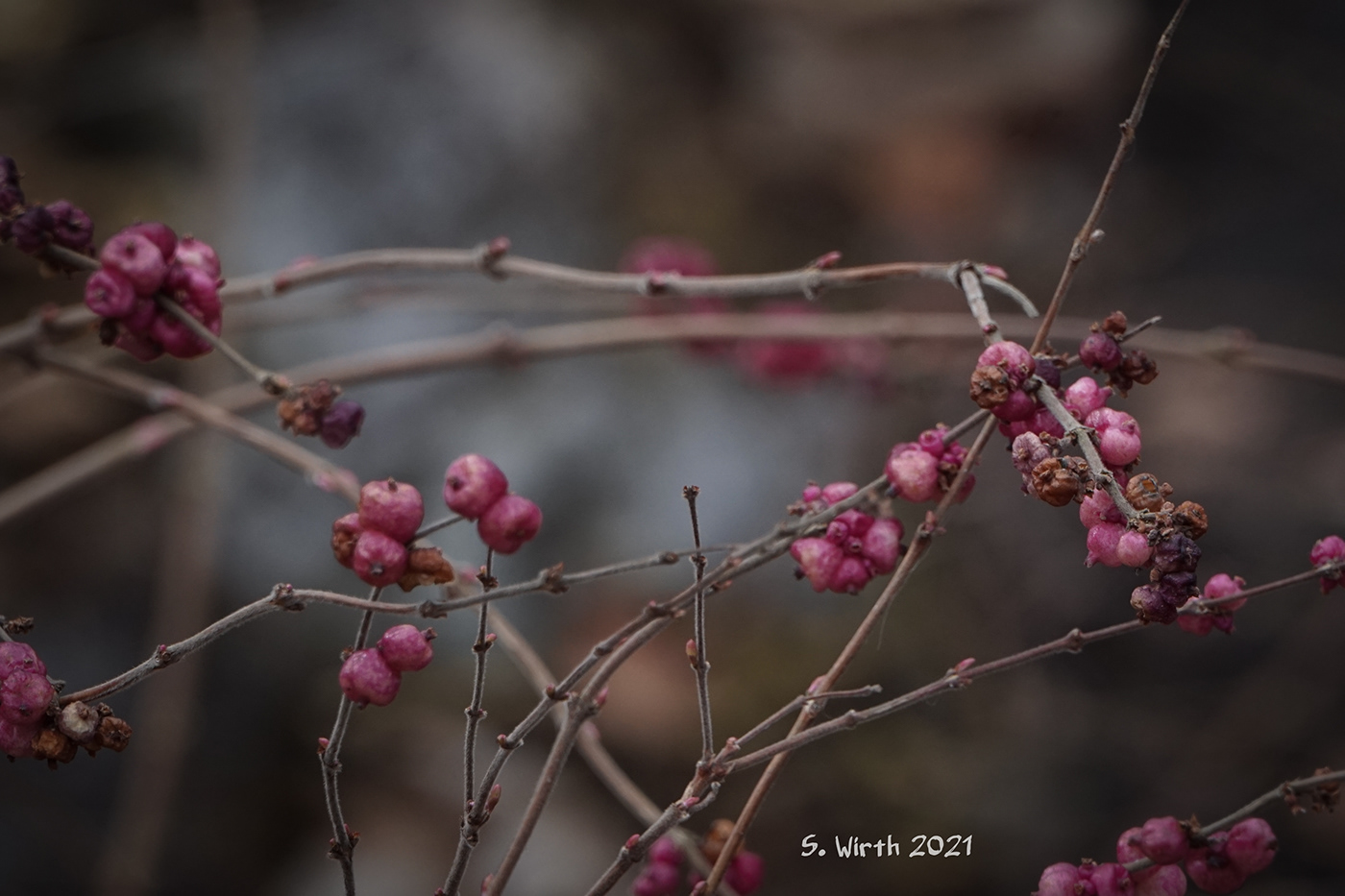
May be Symphoricarpos albus with fruits from the last year, April 2021, Rehberge, Berlin
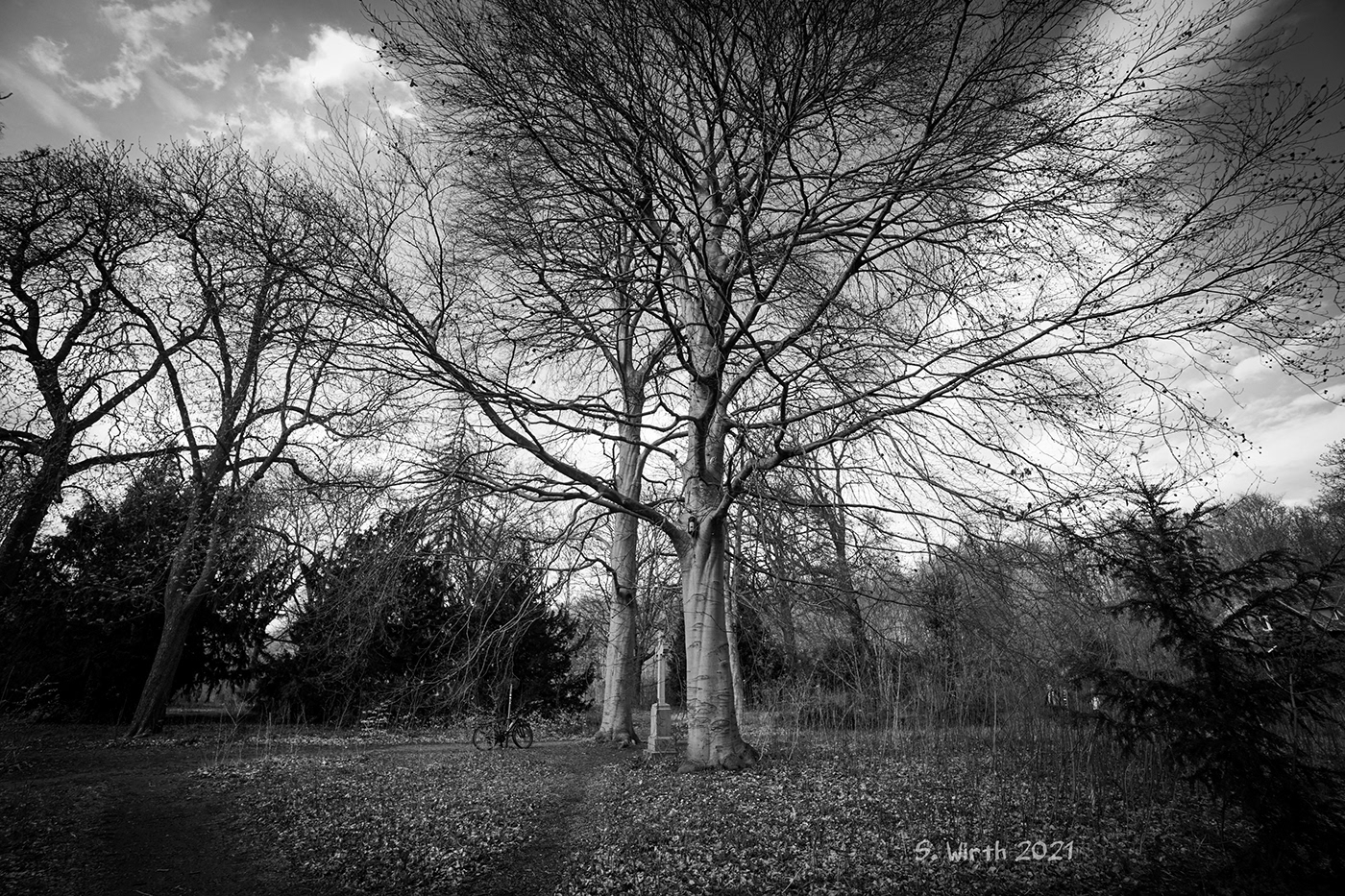
An old leaf spins from a tree, whirled up by a gentle breeze, and initially joins the other leaves laying on the ground.
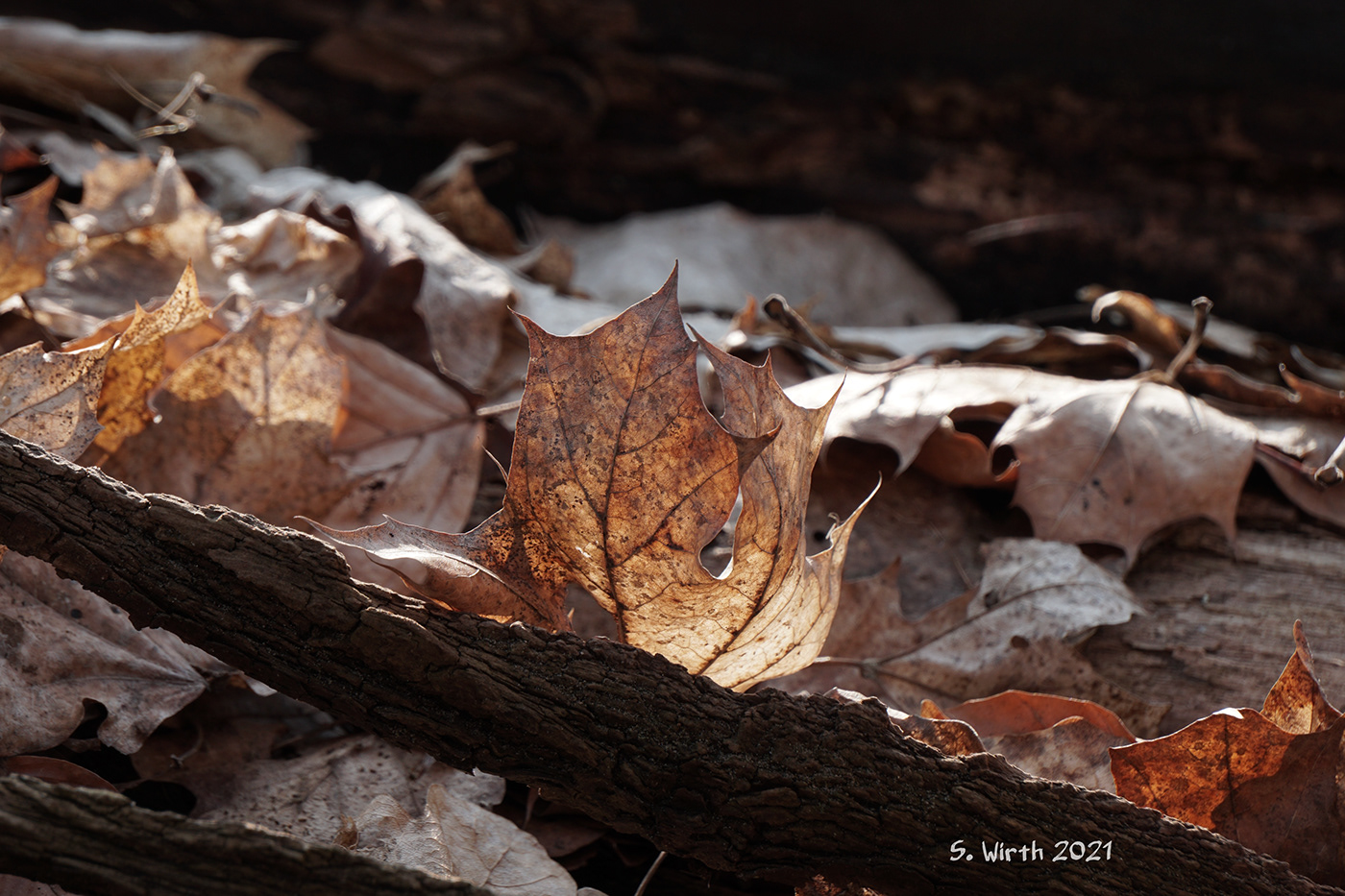
All of a sudden it rises, turns on its own axis and proudly stands up. The evening sun shines golden through it, and the leaf veins appear against the light like the cryptic letters of an ancient note by the forest.
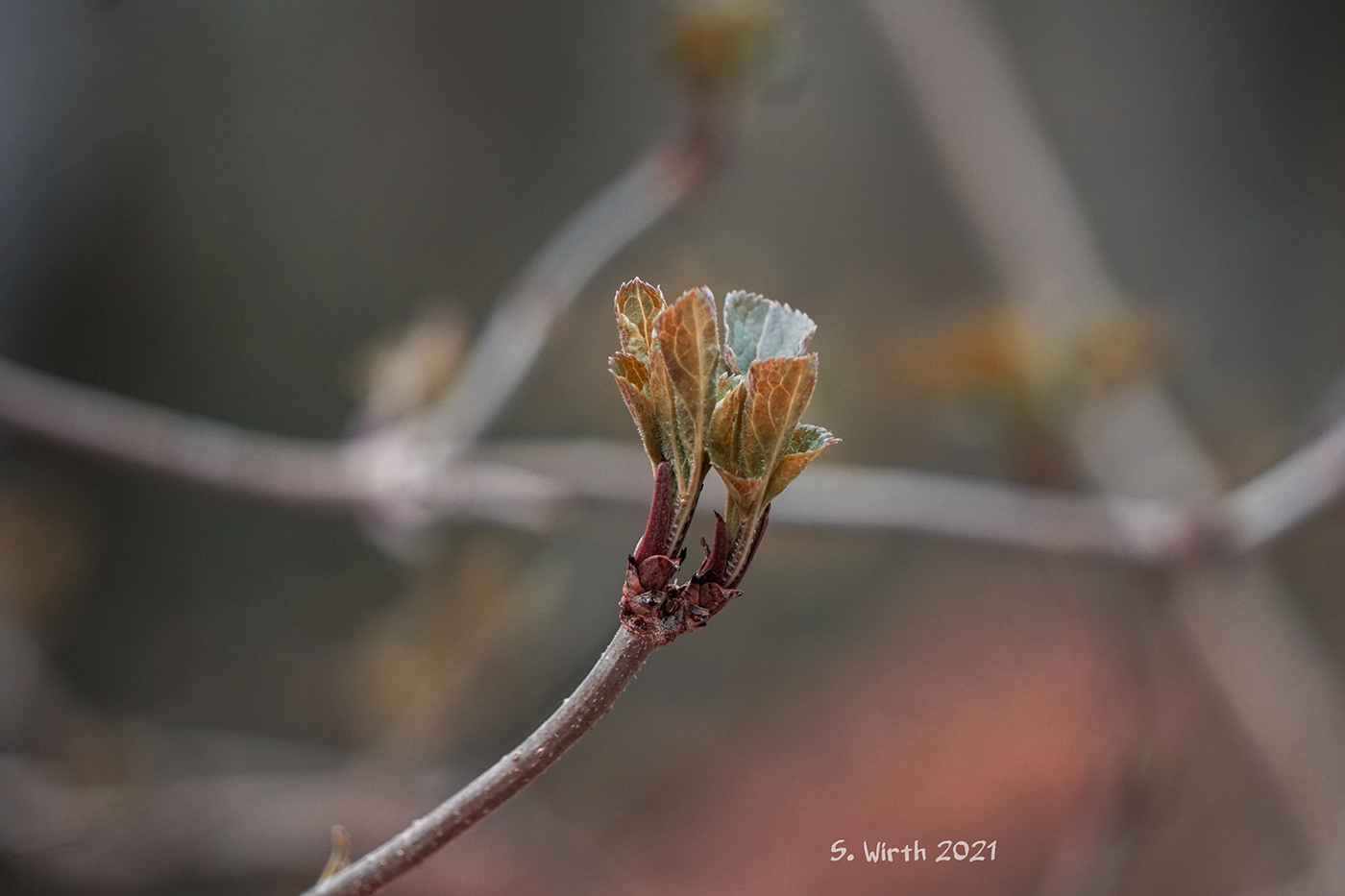
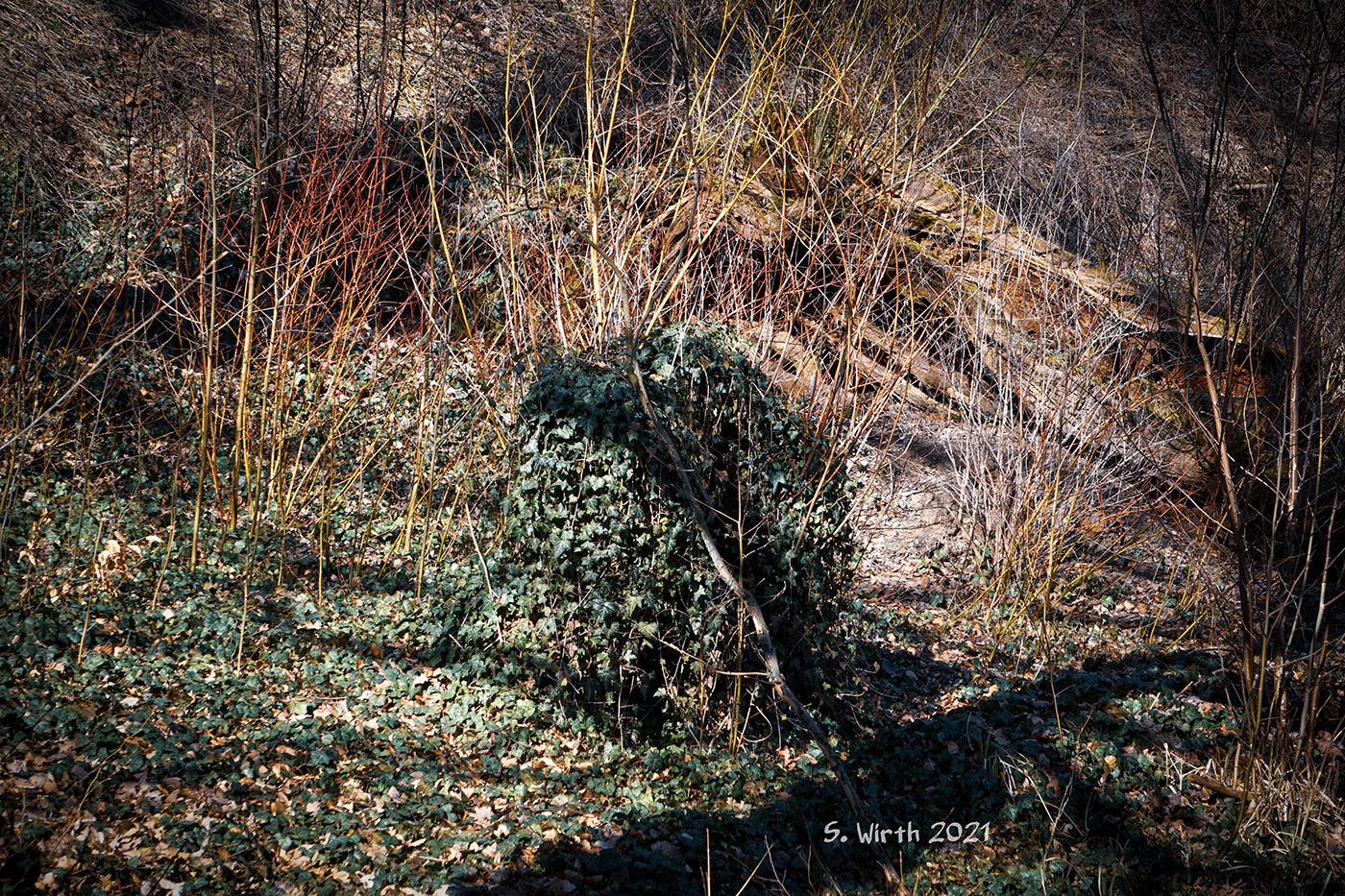
Ivy over-growing deadwood in park Rehberge, Berlin
Mute Swan breeding
The mute swan can be very trusting. The couple built their nest in a very crowded place.
Luck for me as a cameraman, but bad luck for the offspring that did not hatch out of the eggs.
Luck for me as a cameraman, but bad luck for the offspring that did not hatch out of the eggs.
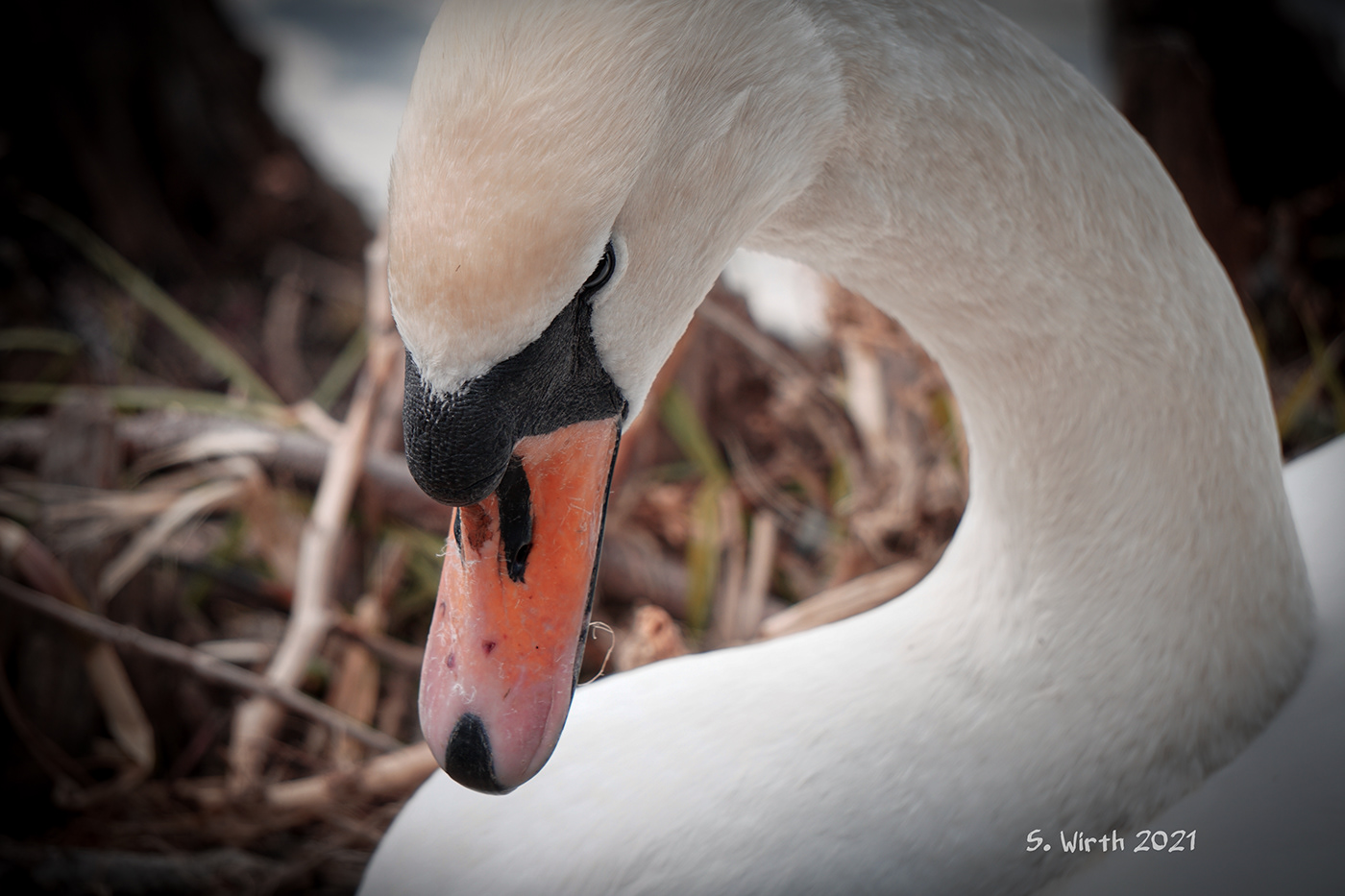
Breeding Mute Swan
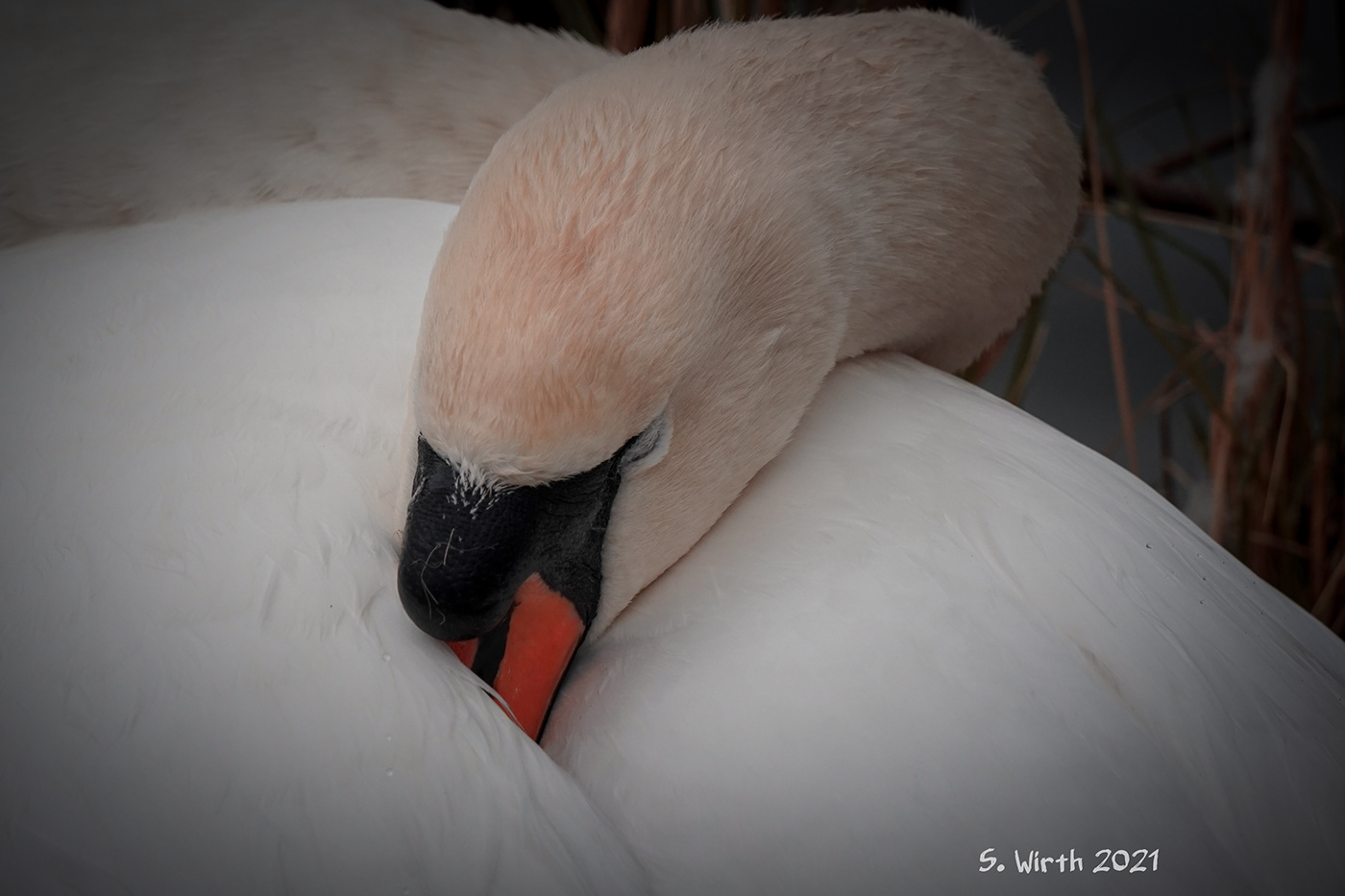
The nest was on the other side of a wall at Plötzensee in Berlin, over which one could easily lean.
So I observed that four eggs were initially laid. After that, roughly the same number of eggs was gradually added.
So I observed that four eggs were initially laid. After that, roughly the same number of eggs was gradually added.
In this species, the female predominantly breeds while the male stays nearby.
It is nice to see how the female repeatedly positions the eggs to different places, even turning them around, on a surface made of down feathers to ensure good ventilation and an even supply of warmth.
It is nice to see how the female repeatedly positions the eggs to different places, even turning them around, on a surface made of down feathers to ensure good ventilation and an even supply of warmth.
My video about breeding behaviors of the mute swan between early April and late May 2021, Plötzensee, Berlin
Depending on the temperature and weather, the clutch is regularly cared for with the help of the long, flexible beak, which picks up the nesting substrate from the edge of the nest and encloses the side area of the clutch with this nesting material.
The images visible in the film were taken during my regular visits to the nest over a period of almost two months (including nest construction and egg-laying, breeding normally about 30 days). Often the breeding animal showed only a few noticeable behaviors that would have led to interesting film recordings.
The images visible in the film were taken during my regular visits to the nest over a period of almost two months (including nest construction and egg-laying, breeding normally about 30 days). Often the breeding animal showed only a few noticeable behaviors that would have led to interesting film recordings.
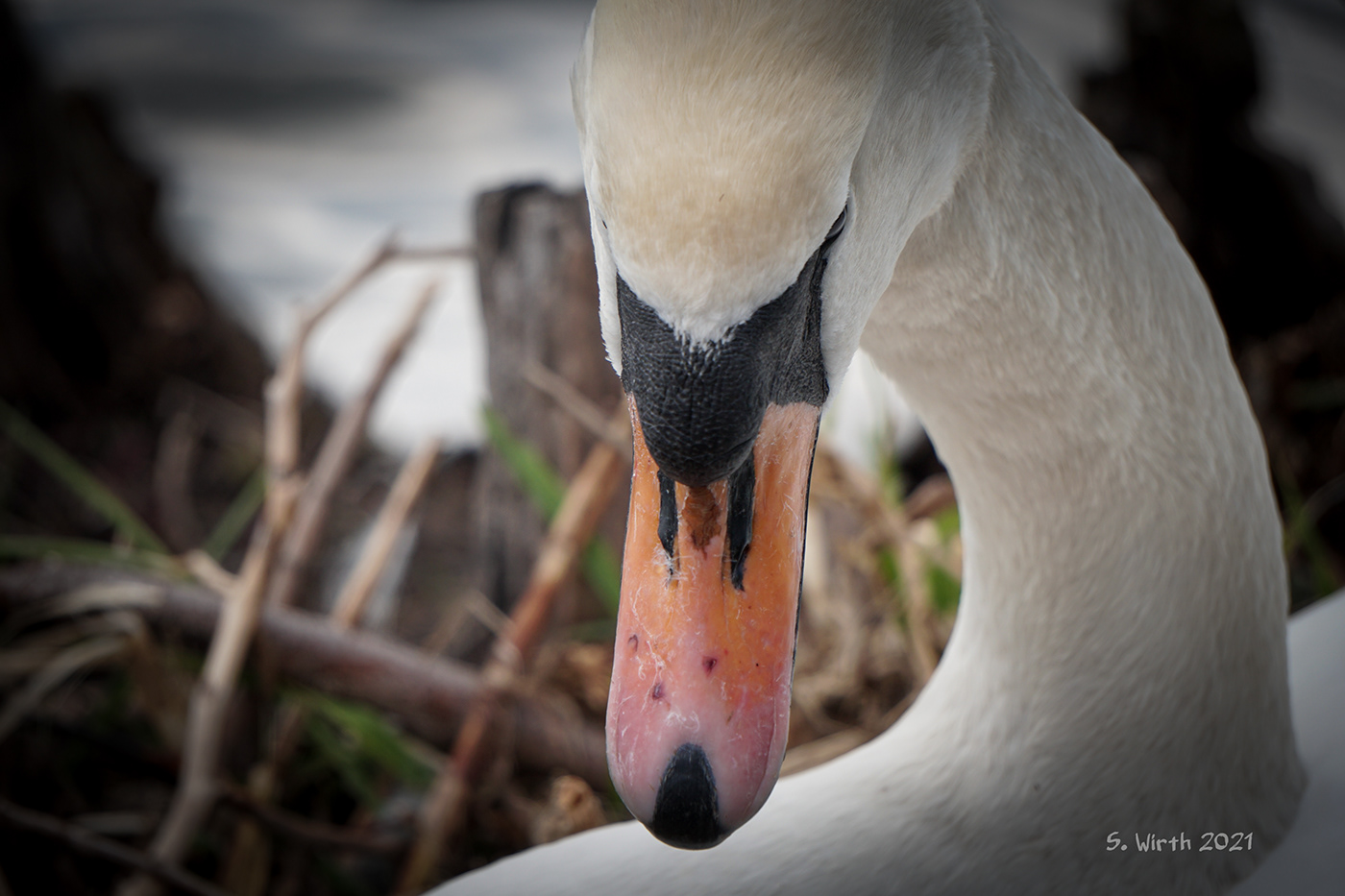
On May 29th I visited the nest at Plötzensee for the last time. Something must have happened: the nest was deserted, two destroyed eggs could still be seen. The swans seemed to be gone.
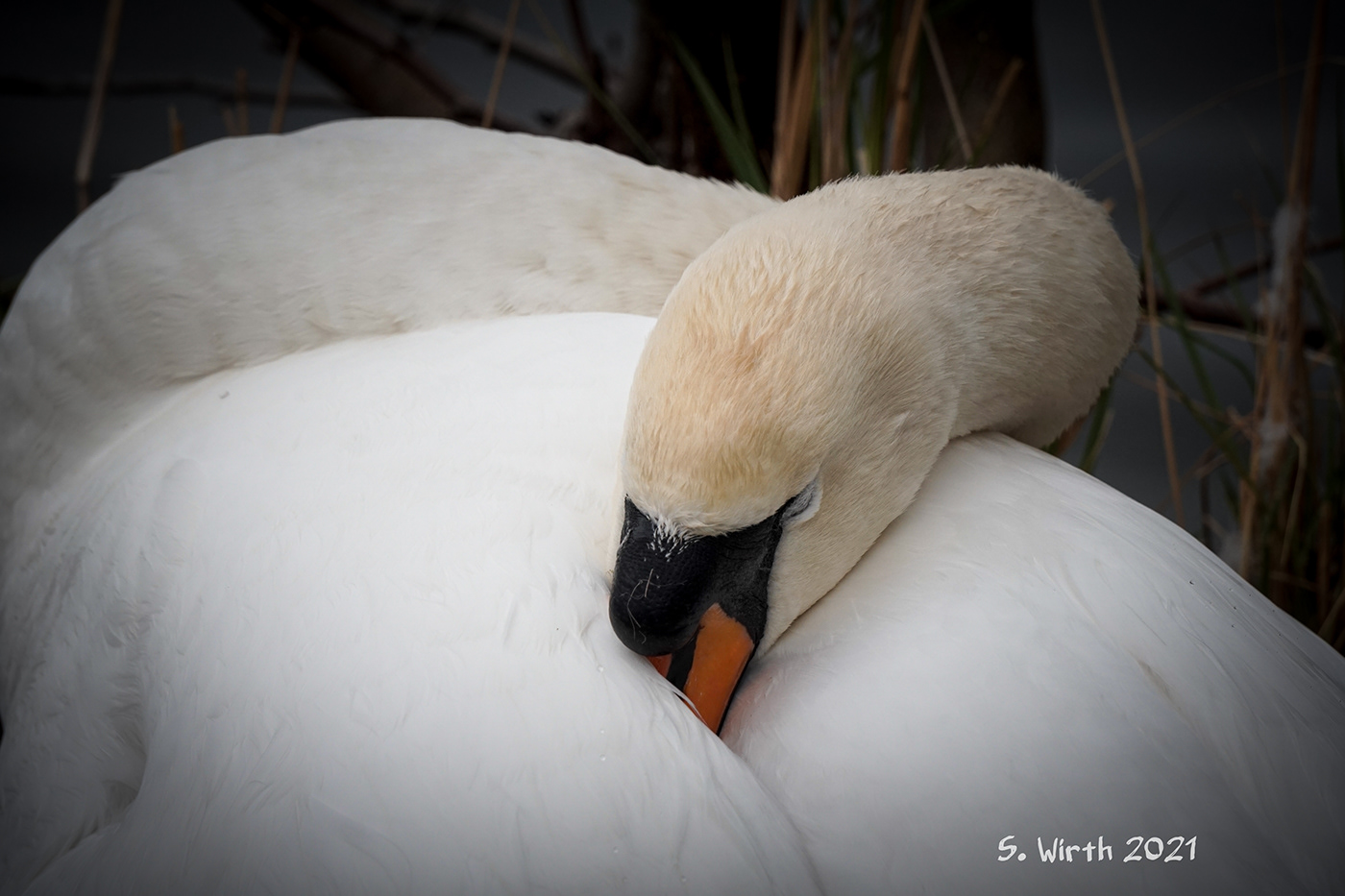
Various factors can explain the failure of a clutch of birds. However, human vandalism cannot always be ruled out.
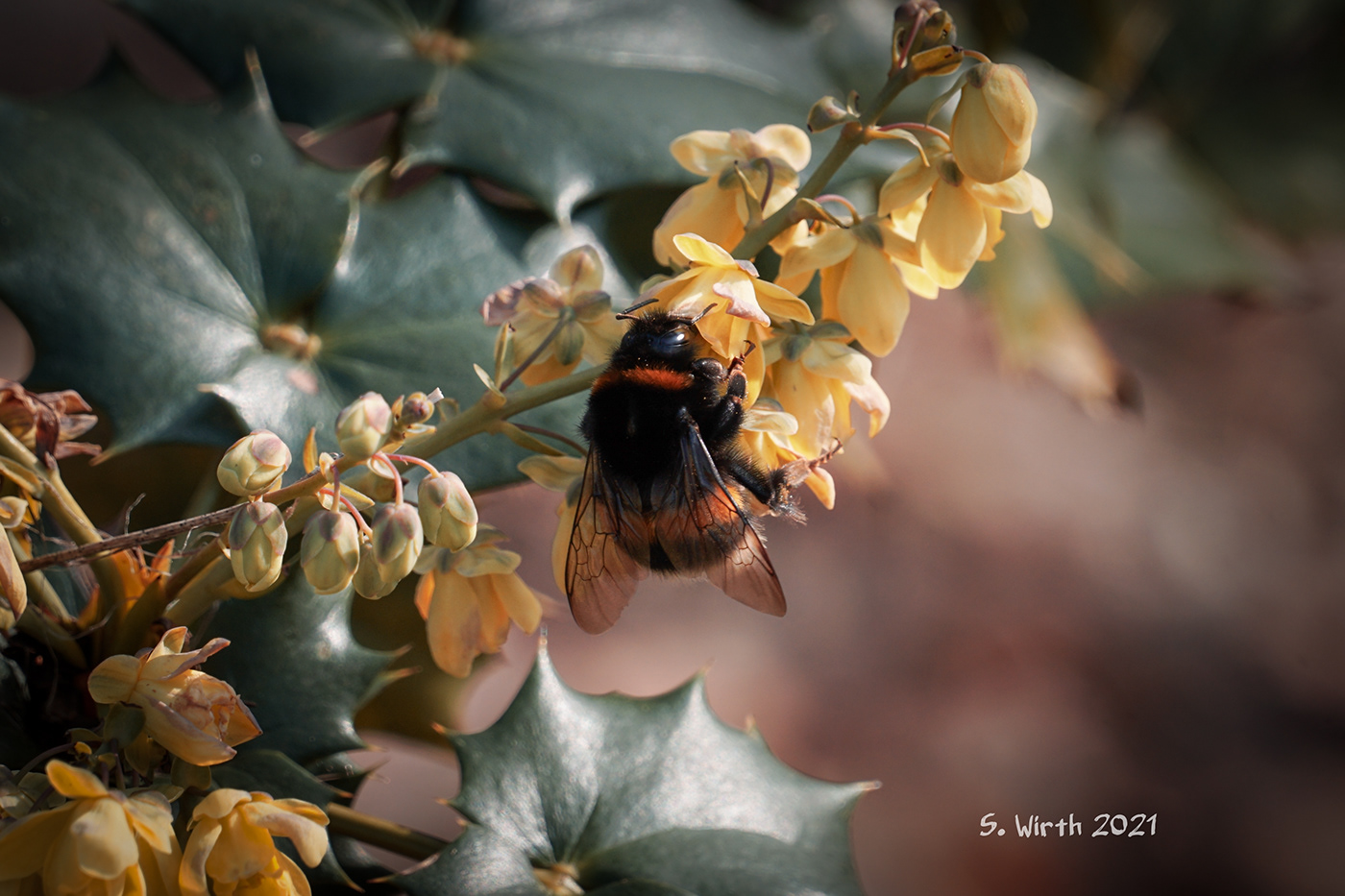
May be bumblebee Bombus lucorum, Rehberge, Berlin
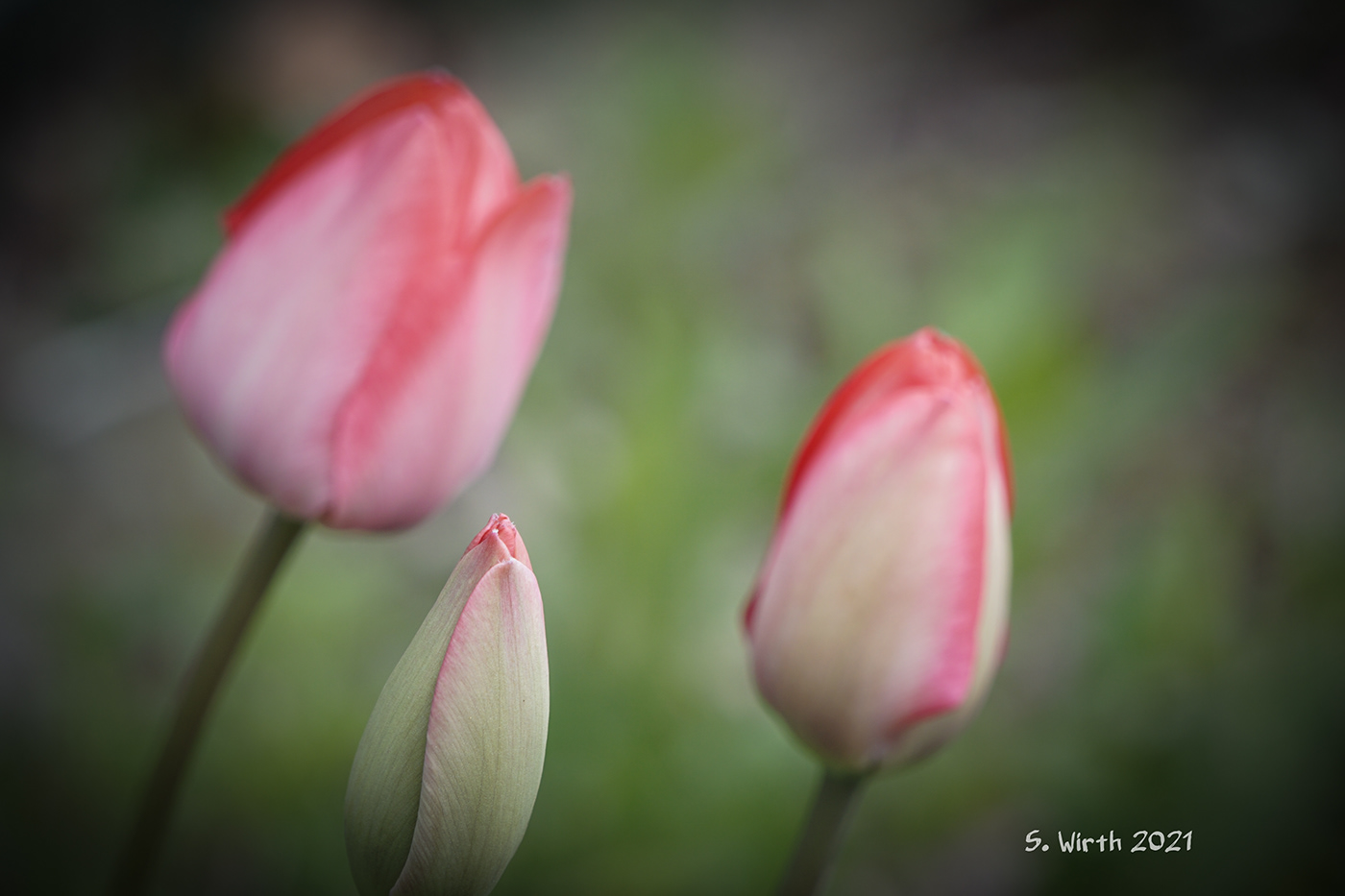
Tulips, Rehberge, Berlin
Forest as a mosaic of habitats
The forest encloses a world of its own. Life is everywhere, even where it is not suspected.
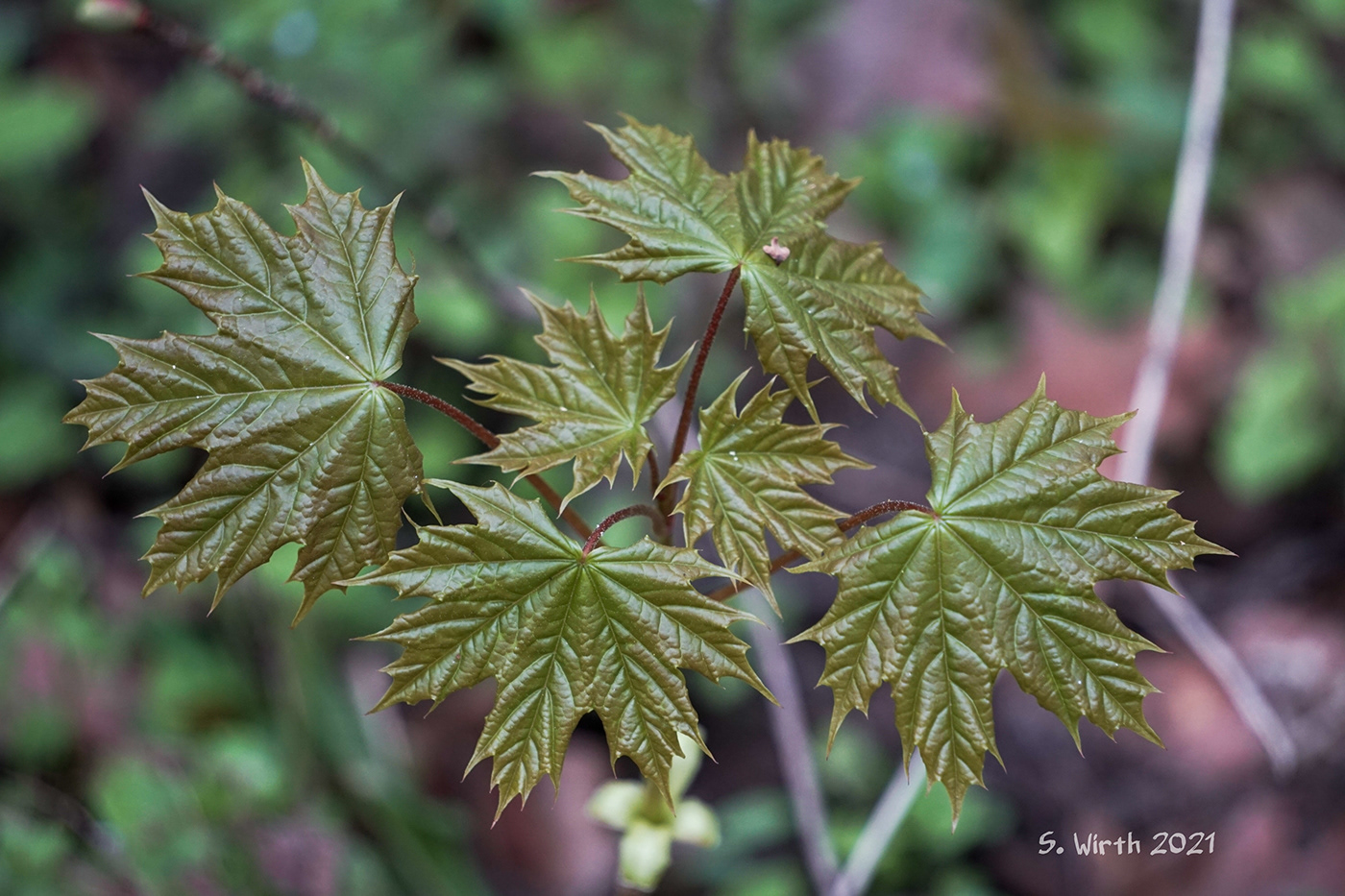
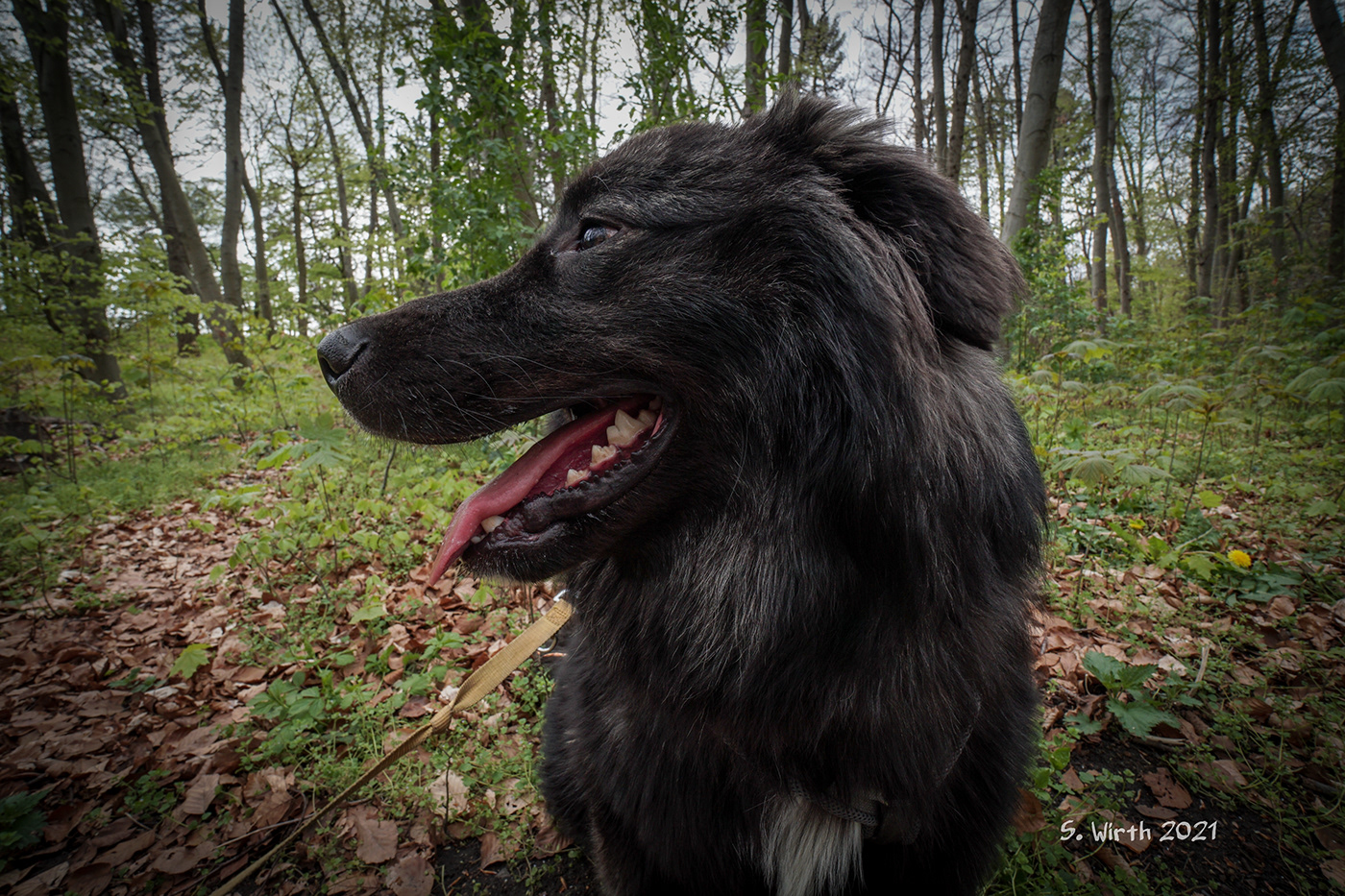
Dog Hank
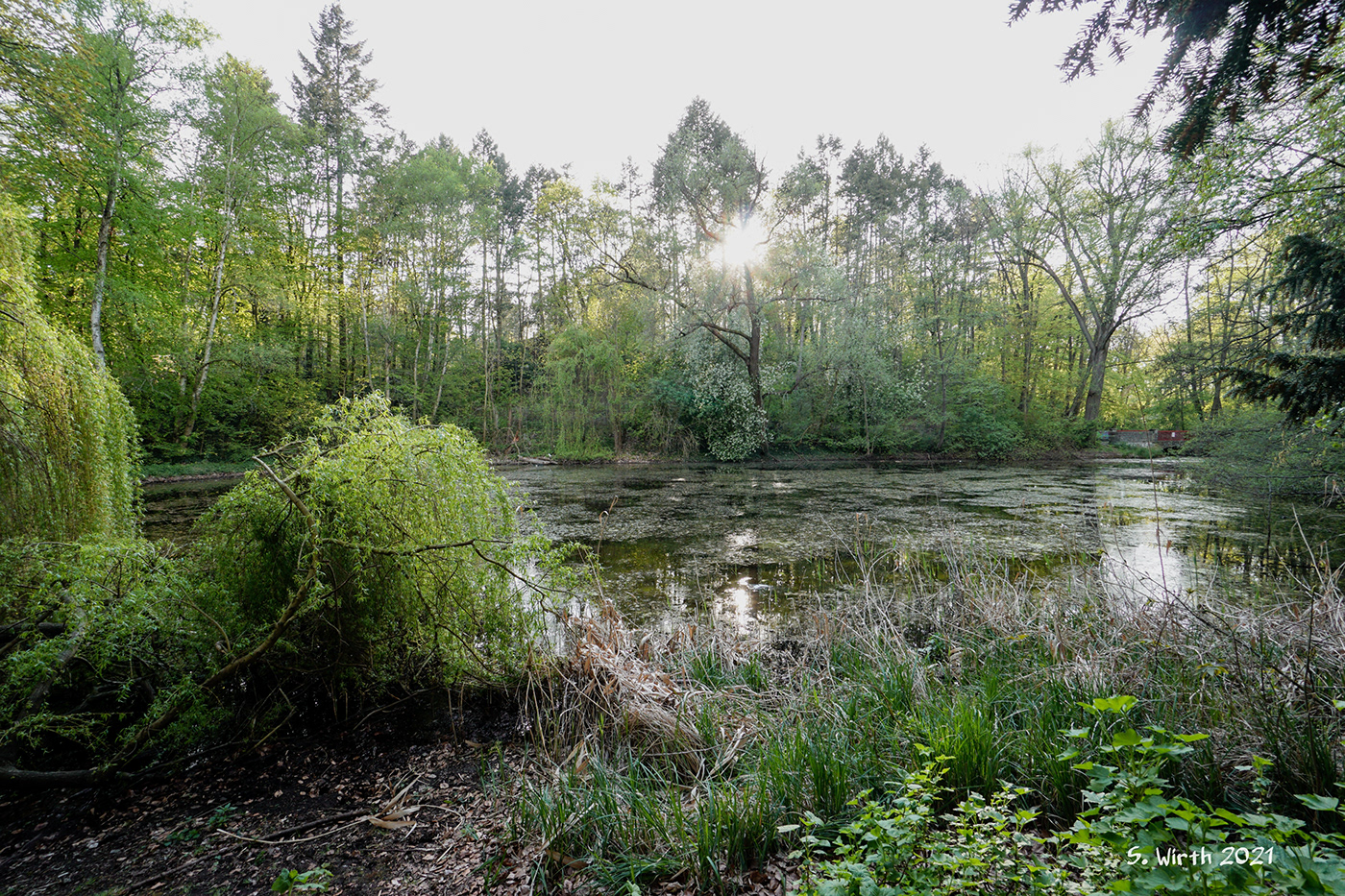
Pond in urban park Rehberge, Berlin
Tiny organisms that are specifically native to the area can be observed in all crevices and on all surfaces. Sometimes the naked eye is enough to make interesting observations.

Anemone nemorosa, park Rehberge, Berlin

Seemingly galleries of a cerambycid beetle
If, for example, the bark of a dead tree is peeled off, traces of former life can always be seen. The galleries of bark-dwelling insects such as bark beetles or longhorn beetles often appear like imaginative abstract ornaments.
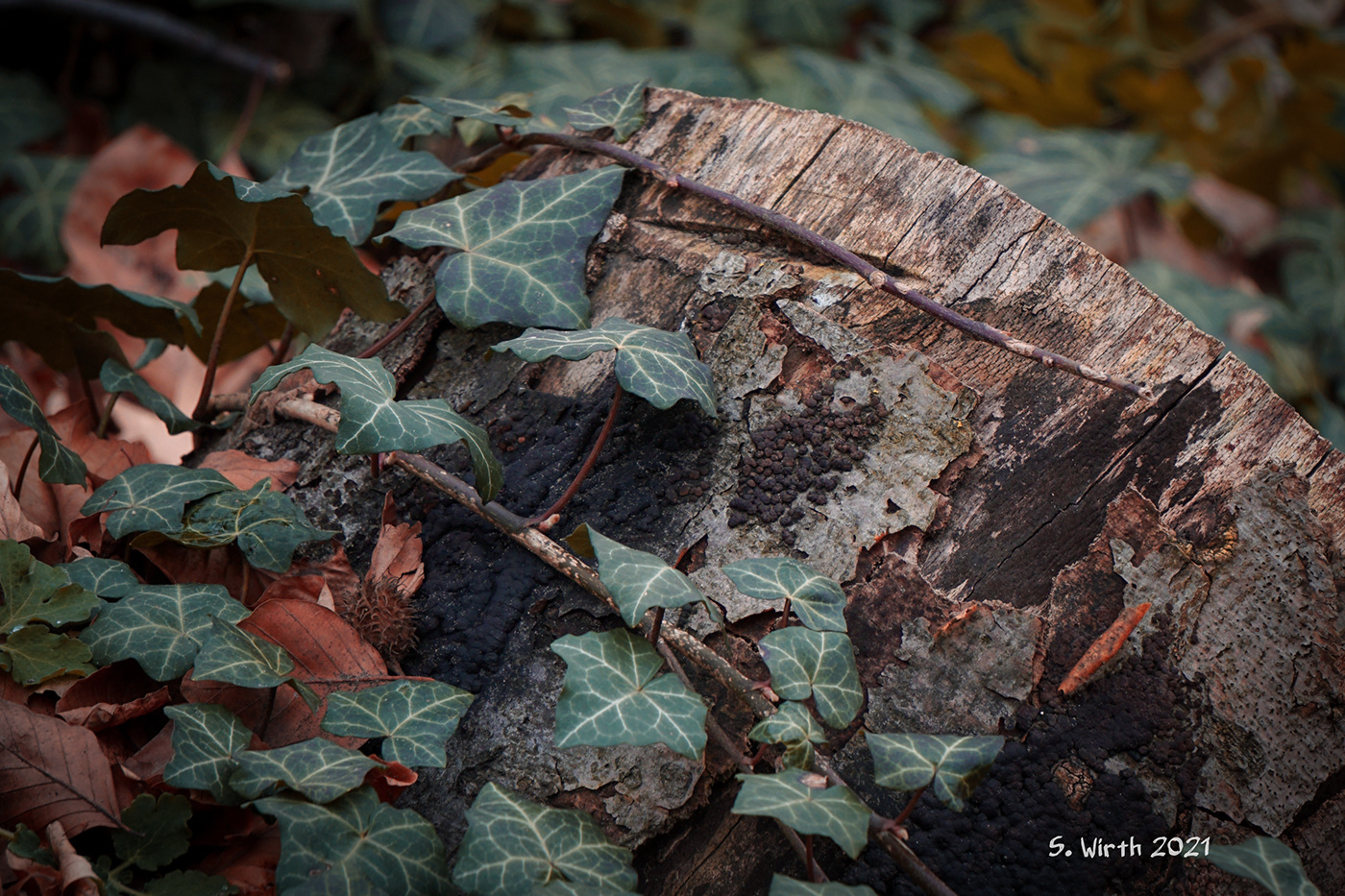
All copyrights Stefan F. Wirth, Berlin park "Rehberge" and "Plötzensee", April to end of May 2021


